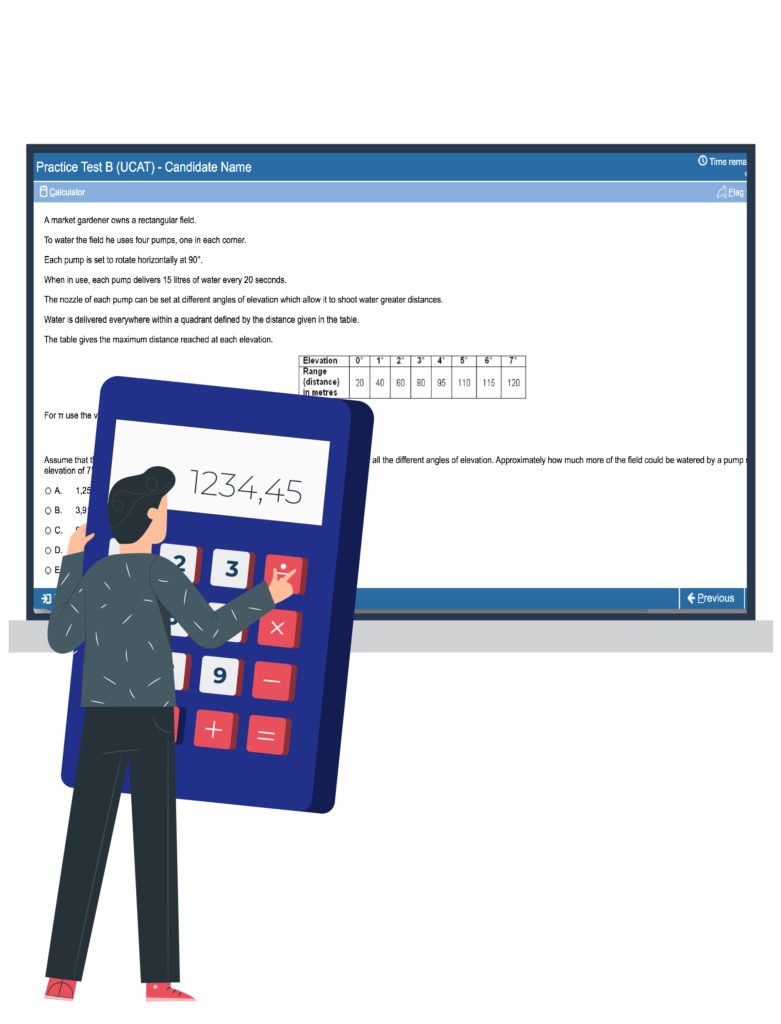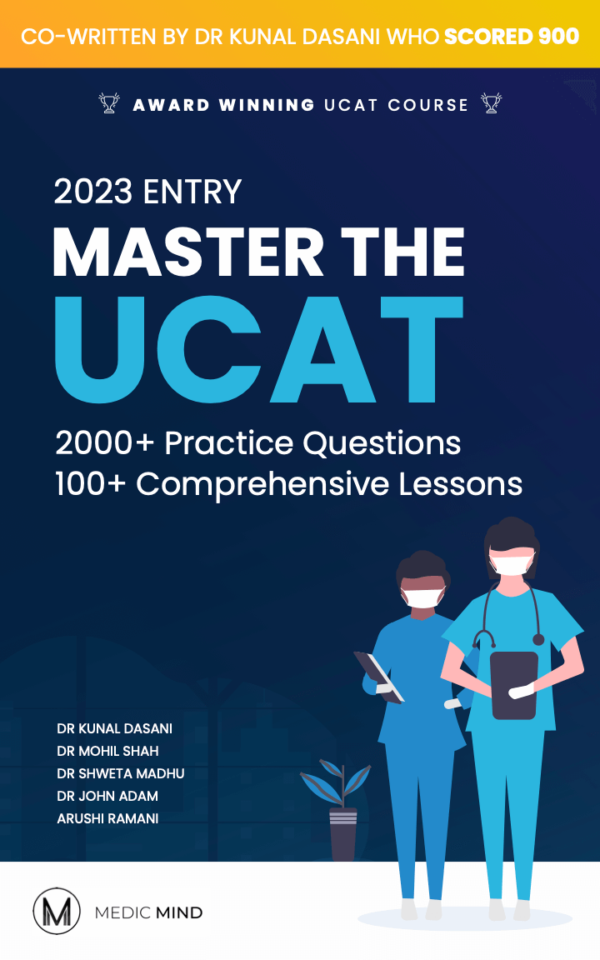Loading...

UCAT Quantitative Reasoning: 10 Tips for UCAT success
Quantitative Reasoning is one of the most divisive UCAT sections. Those that love maths enjoy it, those that don’t find it a challenge. But with careful planning and preparation anyone can be successful.
Even if you love maths familiarising yourself with the questions is still a must. So regardless of your level or confidence in maths you can find our top 10 tips below.
1. Practise each UCAT quantitative reasoning topic
Like every other section of the UCAT, there are multiple different question types in the quantitative reasoning section. These include questions focusing on ratios, percentages, graphs, both simple and complex calculation. You may find some of these easy, but others more challenging. Regardless, it is important that you practice every type so you know what to expect and identify the questions you’re most likely to struggle with.
Many students find it useful to keep a list of the different type of questions or topics they come across during their preparation. This helps you take note of any areas you’re struggling with and also lets you see which topics are most common. Some of the common types of questions that come up in the UCAT quantitative reasoning section are:
- Percentages – calculating percentage increases/decreases
- Rates – calculating speed, distance and time and converting between rates
- Graph reading – being able to pull data from a graph for calculations
- Ratios – calculating ratios of given quantities
- Averages – calculating mode, medians and means
- Perimeters, areas and volumes – being familiar with the formulas to carry out these
If there is something you are finding particularly difficult then one of our one-to-one tutors may be able to help you with some tailored lessons.

2. Find appropriate practice material
There are many different resources on the market for practising UCAT quantitative reasoning. We have written a whole article on those available and some books that may be useful. But, be careful with the ones you choose.
For example, the ISC 1250 book for example is often found to be more difficult than the actual test. Choose carefully so that you have appropriate questions to practise, but also so as not to overwhelm yourself.
3. Master the calculator
Being proficient in using the on-screen calculator has a massive impact on both your speed and accuracy for this section. It is key that you practise with it prior to the test so you know how to use it effectively.

But as many of you will find when practising with this calculator, it is slow and awkward to use. The onscreen calculator is designed to impede your ability to answer questions. This is why mastering it is key to both speed and success. We have a whole article on the UCAT calculator to provide you with further tips.
4. Know your strengths (and weaknesses)
Some people struggle with maths more than others. If you find maths challenging, make sure you do not neglect this section no matter how tricky it might be to start with. Just a few hours of carefully structured practise revising GCSE topics and looking at the basics such as ratios, percentages and your mental maths will make a huge difference.

If you are still finding it hard then perhaps some input from one of our one to one tutors could have a positive impact on your preparation.
5. Use mental maths
Just as important as knowing when to use the calculator, is knowing when not to use it. Using mental maths for a suitable calculation will save you from having to input all of the numbers into the calculator, saving you time on that question. When this happens over several other questions the time saved will add up, and could even be the difference between you finishing the section or not.

Spending a little bit of time practising your mental arithmetic and times tables can go a long way to help speed up your performance.
Boost your UCAT Score with our Expert Tutors!
6. Know your units
Another way to save time during the UCAT quantitative reasoning section is to have memorised unit conversions. Below are a few conversions worth remembering:
| Unit | Conversion |
| Distance | |
| 1 kilometre | 1000 metres |
| 1 metre | 100 centimetres |
| 1 centimetre | 10 millimetres |
| Weight | |
| 1 kilogram | 1000 grams |
| 1 gram | 1000 milligrams |
| Volume | |
| 1 liter | 1000 milliliters |
7. Write down intermediate steps
The UCAT calculator does not have the answer function you might be used to on a scientific calculator, so it is easy to lose numbers during longer and more complex calculations. To avoid this happening, it can be worth making a quick note of the mid-step numbers on your white board, so they’re available for you to use later on.
8. Use the flagging function
If you are struggling with a particular question, don’t get caught up with it and waste lots of time trying to arrive at the answer. Here it would be a good idea to make use of the flagging function, which marks the question so it’s easier for you to come back to it later. Try not to rely too heavily on this though as timing is tight and it’s unlikely you’ll have much (if any) time left at the end to review the flagged questions.

9. Know when to estimate
The timing in quantitative reasoning can often be a greater struggle than carrying out the calculation. To maximise your time, it can sometimes be appropriate to estimate. Depending on the question it may be appropriate to round numbers to the nearest 10 or 100, to make it easier to do mental maths and avoid wasting time using the calculator.
As the UCAT quantitative reasoning section is multiple-choice, this means you can compare your estimated answer to the given choices to make an educated guess. It is important that you leave no question unanswered as the UCAT is not negatively marked, even if it is just a guess, as you still have a chance of selecting the correct answer.
10. Practice under timed conditions
Timing is one of the greatest challenges throughout the UCAT. In the quantitative reasoning section, you will have 24 minutes to answer 36 questions. Initially when practicing get used to doing the questions and carrying out calculations using the UCAT calculator so you become comfortable. Then start to practice under timed conditions to ensure that you’re able to work both accurately and with speed.
Frequently Asked Question
→What is the UCAT Quantitative Reasoning section?
The UCAT Quantitative Reasoning section tests your ability to interpret numerical data, solve mathematical problems, and make logical deductions from numerical information.
→What is a good UCAT Quantitative Reasoning score?
→How do I get a high score in UCAT Quantitative Reasoning?
The best way to improve your score is to practice questions to familiarise yourself with the topics tested, the time you have to answer the questions and the exam format. Make sure you have a strong technique (around GCSE grade B) and are comfortable manipulating fractions/decimals/percentages in your head.
Once you’ve got the maths techniques down, you can move on to working on your timing and figuring out how to answer the questions and fast as possible.
→What level of maths do I need for UCAT Quantitative Reasoning?
The maths ability required is that of a good secondary school pass. For students sitting GCSEs this is around grade B/6.
→What are some tips for success in the UCAT Quantitative Reasoning section?
Some tips for success in the UCAT Quantitative Reasoning section include practicing with sample questions, learning and reviewing mathematical formulas, and improving your mental arithmetic skills.
→How can I prepare for the UCAT Quantitative Reasoning section?
You can prepare for the UCAT Quantitative Reasoning section by familiarising yourself with the format and style of the questions, practicing with sample questions and past papers, and using online resources and study guides.
→How important is the UCAT Quantitative Reasoning section for UCAT success?
The UCAT Quantitative Reasoning section is a crucial part of the UCAT exam, and a high score in this section can significantly increase your chances of being accepted into a medical or dental school.
Related
Related Articles
Support for the whole medical application process from UCAS application, UCAT/BMAT, personal statement, interview and more!
With over 1000 UCAT questions, mock paper walkthroughs and timing tips and advice
A unique opportunity to explore the world of healthcare through interactive simulations and real-life case studies. Run by senior physicians
Personalised private lessons, tailored to your UCAT needs





Was this article helpful?
Still got a question? Leave a comment
Leave a comment